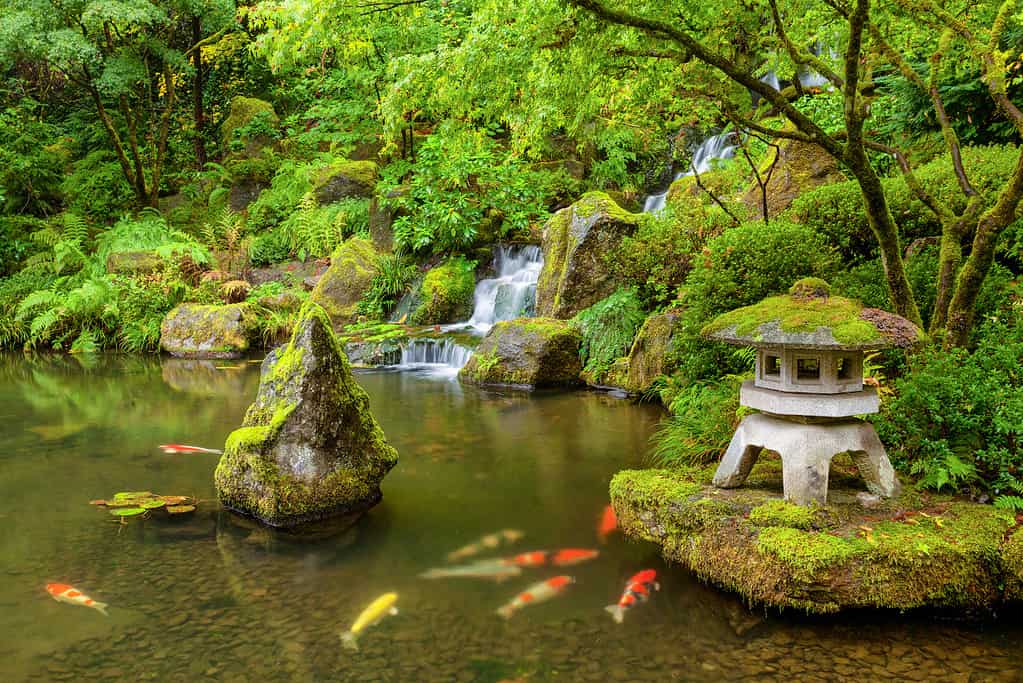
Here’s a view of a Japanese garden in Portland with a pond stocked with
koi
.
©paulacobleigh/ via Getty Images
The Japanese Zen Garden is a marvel of peace and simplicity, attributes valued by Zen Buddhism. The tranquility of the garden sets the mood for the tea ceremony, which was often performed in the vicinity. The garden can be large or small, have water features or water represented by carefully placed rocks or raked gravel. Plants represent forest glades and are placed and pruned to keep the elements of the garden balanced. The careful way plants are arranged in a Japanese Zen Garden is called shokobutsu. Here are 10 plants ideal for a Japanese Zen Garden.
1. Bamboo
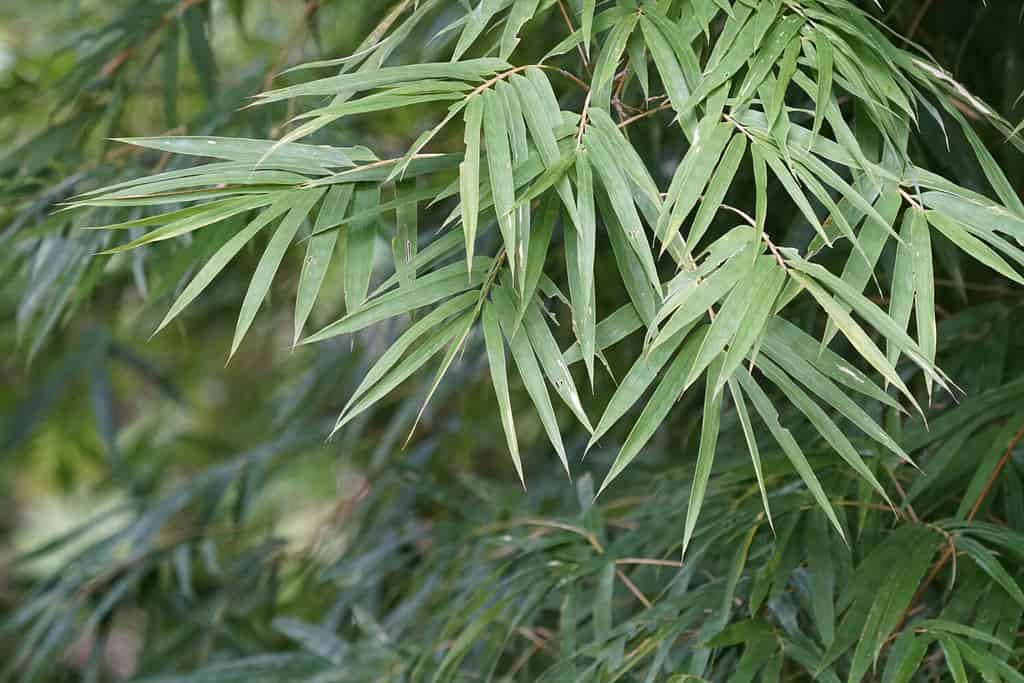
The bamboo is a symbol of strength and purity in Japan.
©Doikanoy/Shutterstock.com
Though some kinds of bamboo can grow to 100 feet tall, bamboo is actually a type of grass. The way it bends to the wind in the garden symbolizes flexibility as an aspect of strength. Some of the more popular types of bamboo you’ll find in a Japanese Zen Garden are moso, Castillon, and the dwarf bamboo kumazasa.
Bamboo does best in well-drained but heavy, acidic loam that’s kept moist. It prefers a southern location in full sun. Fertilize the plant once a year with a 10-6-4 fertilizer in the spring. Bamboo is famously aggressive, so to keep it tidy pull out any dead culms or stems and take out new shoots in spring. To keep the bamboo from spreading, dig up the soil outside of the original planting and cut the rhizomes. Bamboo meant for your garden grows between 6.6 and 49 feet tall.
Dwarf bamboo differs from standard sized bamboo in that it is perfect for a shady spot in the garden. It can also tolerate cooler temperatures. Dwarf bamboo only grows to about 3 feet tall, so is perfect to place beneath trees, near fences or arrangements of rocks. These little plants thrive in the same type of soil as standard bamboo.
2. Mugo Pine
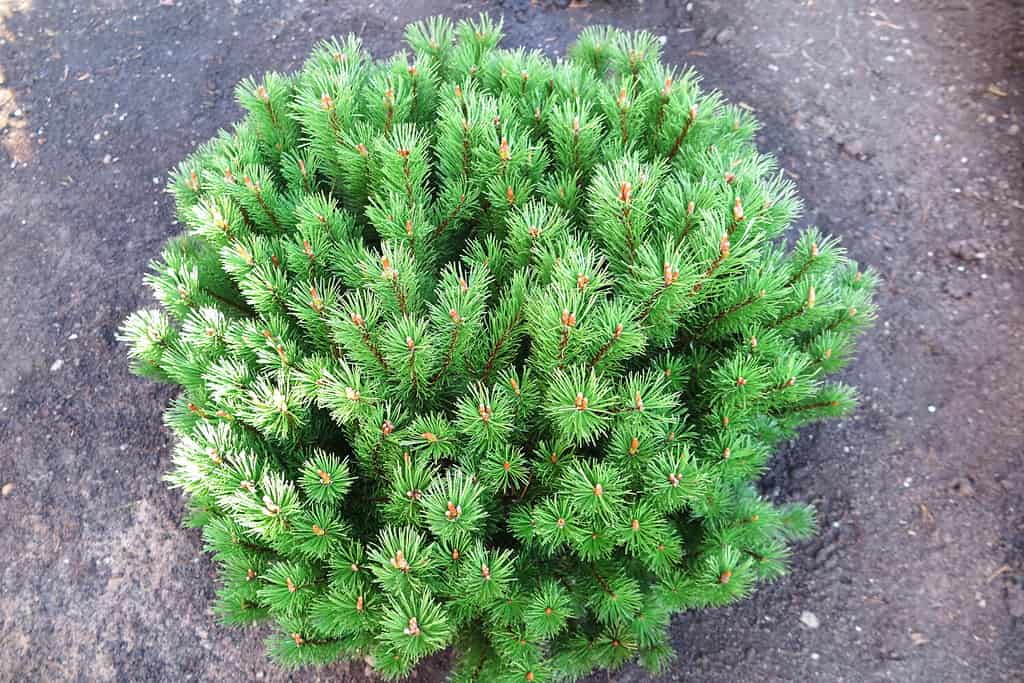
Mugo pine is prized for its beauty and compact habit.
©photowind/Shutterstock.com
Also called the Swiss mountain pine, the Mugo pine is prized in the Japanese Zen Garden for its low, spreading habit and elegantly upright branches. Though it can grow to 20 feet high and have a 25-to-30-foot spread, this pine is usually kept low to the ground and compact in the garden. There are dwarf varieties that only grow to 18 to 24 inches with a 3-foot spread. There are even bonsai versions. This tree likes full sun, loamy soil, medium watering, and does best in cooler climates.
3. Azaleas

Azaleas add a splash of color to the Japanese Zen garden.
©PatGallery/Shutterstock.com
The azalea provides an area of vibrant color in the otherwise sedate Japanese Zen Garden. There are many cultivars of azaleas, which belong to the same genus as the rhododendron but have more funnel shaped flowers. They can be deciduous, which means they lose their leaves in winter, or evergreen. Kurume azaleas are evergreen Japanese hybrids that grow to 6 feet tall, and come in colors of pink, fiery red, white, and magenta. Azaleas are famously shade loving and flourish in acidic, well-drained soil.
4. Boxwood

Boxwoods are evergreen and used in topiary.
©iStock.com/coramueller
Boxwood is considered a good fit for your Japanese Zen Garden because its leaves are dense, evergreen, and the shrub takes well to even extreme pruning and shaping. Most of the boxwoods you’ll see in one of these gardens are smaller, shaped into a globular habit and placed beneath a tree. Without shaping, a boxwood grows between 5 and 15 feet tall with a similar spread.
Boxwoods do best in warm climates that aren’t subject to extremes of heat and cold. The climate should also get a good amount of rainfall. Plant bushes in rich, well-draining soil amended with compost and rotted manure. After it’s planted, add about an inch of mulch around the boxwood to keep in moisture and protect its shallow roots. Organic mulch eventually decomposes and adds to the richness of the soil.
5. Weeping Higan Cherry
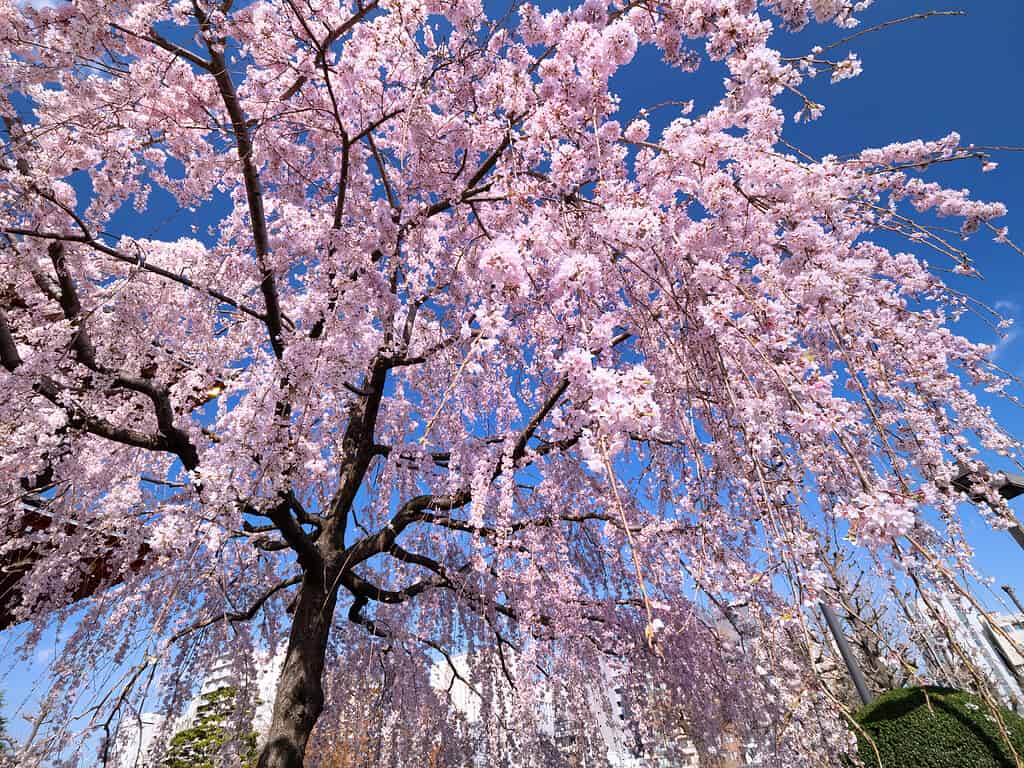
The blossoms of the of weeping Higan cherry tree symbolize the brevity of life.
©y-studio/iStock via Getty Images
This beautiful small tree grows between 8 or 15 feet tall with a 6-to-8-foot spread. Its fragrant white or pink flowers arrive in April on branches that arch all the way to the ground. The weeping Higan cherry thrives in full sun and loamy, fertile soil that drains well but is kept moist. In the fall a few black fruits replace the flowers, and the tree’s dark green leaves change into bright orange or gold.
6. Moss

Water moss in your garden every day to keep it green and soft.
©Noor Wahid/Shutterstock.com
Moss is what used to be called a “non-flowering plant.” These plants reproduce through spores instead of seeds and create low, cushiony mats in shades of green in moist and acidic soils. Because of this, gardeners use moss as a ground cover throughout a Japanese Zen Garden. Moreover, moss soaks up moisture and is excellent to install in places in the garden that are too wet or where it would be inappropriate to install flowering plants. Moss dries and turns brown when it’s not well watered, but it returns to its green color when it’s rehydrated. To make sure moss in your garden stays green, water it every day. Moss that’s often used for Japanese gardens are Kurama and haircap moss.
7. Fern
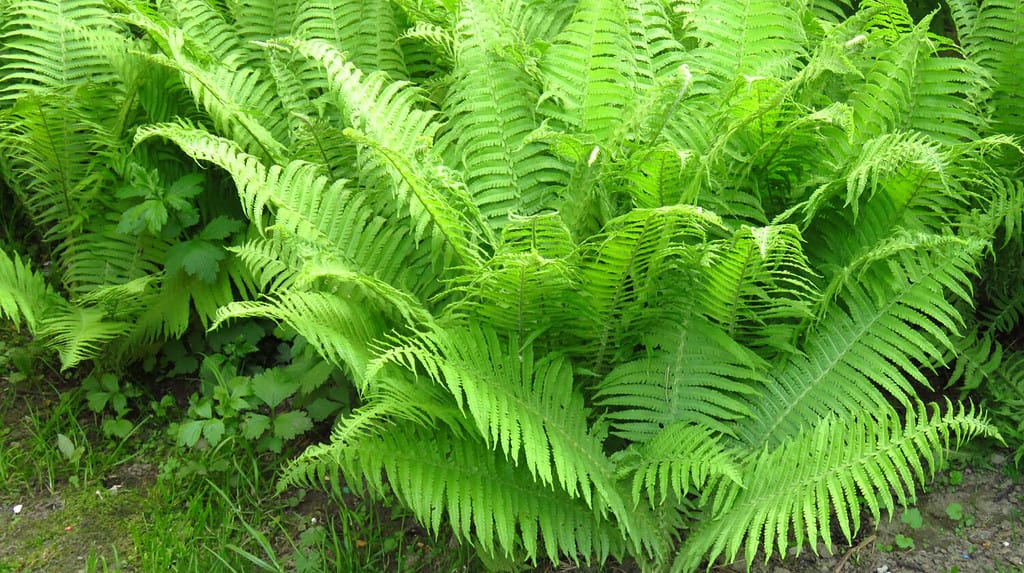
Ostrich fern is not only beautiful, but its fiddleheads are edible.
©Przemyslaw Muszynski/Shutterstock.com
Like moss, ferns reproduce through spores instead of seeds. Many are valued for the lace-like beauty of their fronds. Ostrich fern is a popular plant used in Japanese gardens. Its compound leaves, which put some people in mind of ostrich feathers, can grow to 5 feet in length in clusters as much as 8 feet wide. The leaves are wide at the top and taper elegantly towards the base. These leaves are green and sterile. The fertile leaf is smaller, brown, and its leaflets roll toward the stem and contain pods of spores. The ostrich fern also produces delicious fiddleheads the Japanese call kogomi.
Native to North America, Asia and Europe, ostrich fern thrives in part to full shade and rich, acidic to neutral soil that’s kept moist. It prefers areas with cool summers and can tolerate temperatures as low as -4 degrees Fahrenheit. Like bamboo, ostrich fern can be aggressive, so it’s a good idea to divide it when necessary.
8. Hostas

Hostas are just the thing for a shady spot in your garden.
©Summer 1810/Shutterstock.com
This plant with its beautiful, fleshy, oval or lance shaped leaves is perfect for a shady spot in your Japanese Zen Garden. Called giboshi in Japan, hostas come in many shades of green, though some varieties have a blue or golden cast and others are variegated. They produce racemes of scentless but pretty white, lavender or purple flowers late in the spring or in summer. Depending on the species and the cultivar, they can grow from 4 inches wide and 6 inches high to over 6 feet wide and 4 feet high.
Hostas, which are also called plantain lilies, do best in rich, well-drained soil that’s kept moist and protected from drying winds. They form clumps, so it’s good to divide them in early spring. The plants are not only beautiful, but edible to humans. They may be poisonous to dogs, horses and cats.
9. Aspidistra

Aspidistra is also called the cast-iron plant because of its toughness.
©mizy/Shutterstock.com
Also called the cast-iron plant, this perennial is native to both Japan and China and is a good plant for gardens in warmer climates. It gets its common name because it was the only plant that could survive indoors after the introduction of gas lighting into houses.
You’ll need to plant it in part to full shade in well-drained, somewhat fertile soil. You can also plant it in peaty soil in pots, and bring it in during the winter if the temperate falls beneath 50 degrees F. The cast-iron plant is otherwise easy to care for. It has dark green, glossy leaves that can be as long as 24 inches with a 4-inch width. They arch up directly from the roots. Cast iron plants that grow outside sometimes produce small purplish flowers around the bottom of the plant.
10. Japanese Maple
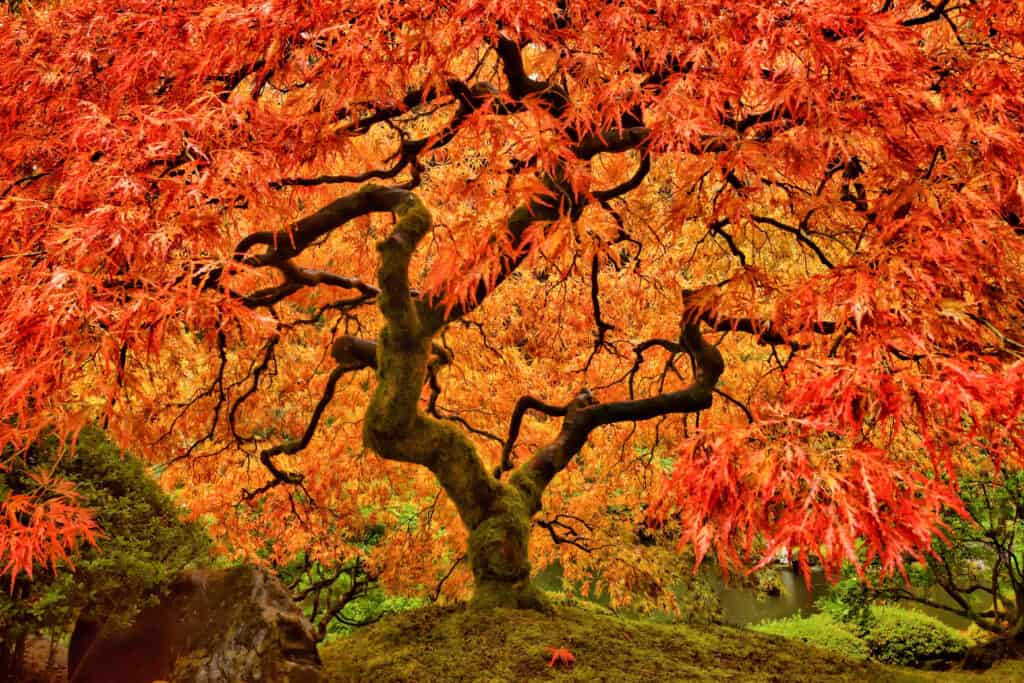
Gardeners prize the Japanese maple for its elegant habit and breathtakingly beautiful foliage.
©Paula Cobleigh/Shutterstock.com
One of the most beautiful maple trees, the Japanese maple is added to gardens for the shape of its leaves, its growing habit, and the brilliant colors it achieves in fall. This small tree grows from 20 to 33 feet high and has a dome-like crown that can be 15 to 33 feet around. The deeply cut leaves are notable for their pointed lobes, and they turn sizzling red to deep purple in autumn. There are three subspecies of Japanese maple (Acer palmatum) that are further divided into over 1,000 varietals.
In nature, Japanese maples grow in the forest’s understory and do best in partial shade. They’ll even flourish in deep shade and are good for corners and borders since their roots are packed together and non-invasive. The soil needs to be kept moist, as the maple doesn’t tolerate drought well. The tree should also be mulched but needs only light fertilization.
The photo featured at the top of this post is © wjarek/Shutterstock.com
Thank you for reading! Have some feedback for us? Contact the AZ Animals editorial team.






